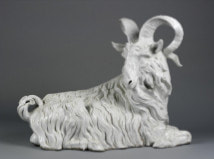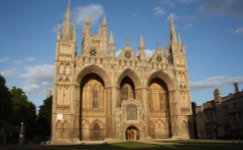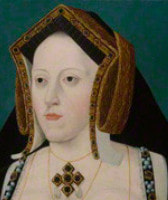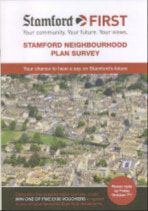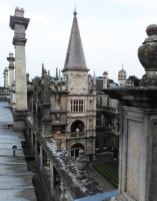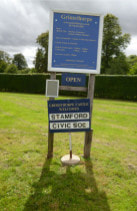Eventful times
|
Gil Williams “A Passion for Porcelain: The Early Years of the Meissen Factory”, 19 November 2016
The origins of Meissen owe much to the pleasure-loving monarch Augustus The Strong (1670 – 1733). Augustus had a real eye for art and wanted his own porcelain factory but porcelain, at that time, could only be obtained as an import from China. Johann Boettger, a German alchemist who claimed he could produce gold, and whom Augustus kept more or less prisoner, failed to produce the promised gold however, with Ehrenfried Walther von Tschirnhaus as overseer they produced white clay porcelain in 1709. The different processes and workers were separated so the production process could be kept secret. In 1710 white porcelain was exhibited at the Leipzig Fair and Meissen was founded. Chinese pieces were copied although mistakes were made with pomegranates becoming onions! By the 1720s Meissen was taking off with vignettes of Chinoiserie design. Much was delicate and glamorous. Ornaments were made as conversation pieces to be placed on tables and discussed and admired, for example the Commedia dell’arte figures. By the end of the Seven Years’ War in 1763 the mood had changed and Meissen’s glory days were gone. It is amazing so much has survived. |
Stuart Orme, Director of Operations, Peterborough Cathedral, “900 Years of an Icon: Peterborough Cathedral, Past, Present and Future”, 16 February 2017
|
2018 sees a year-long programme of events celebrating the start in 1118 of the commencement of building the monastic church. This later became the present Cathedral and is one of the finest Norman buildings in England and resting place of Katherine of Aragon.
Stuart managed the impossible – to give us a taste of 900 years of the Cathedral’s history in under an hour. In fact he did more than this, going back to evidence of a Roman building on this site, possibly a temple or a monumental arch. The first traces of Christian worship came in 655AD, when a monastery was founded. The church buildings have suffered destruction throughout history from fire and enemy raids. The second church was destroyed by Hereward the Wake and his army in 1070. |
The Norman building that we see today was a favourite of the Plantagenet kings who visited frequently. The church was continually enhanced and in the early 16th century a marvellous fan vaulted extension to the East End was created. In 1539 Henry VIII con scated the Abbey’s buildings and land, creating Peterborough as a Cathedral in 1541.
Stuart emphasised that the Cathedral is first and foremost a place of worship open every day of the year except Boxing Day.
Stuart emphasised that the Cathedral is first and foremost a place of worship open every day of the year except Boxing Day.
|
Visit to Peterborough Cathedral – “Awe, Vandalism and Emotion”, 20 April 2017
Standing in Cathedral Close we began our tour gazing in awe at the Cathedral’s great Western Face. It was suggested that this was the finest Western Face of all England’s Cathedrals and it was hard to disagree although there were some background murmurings about Lincoln. Inside we were immediately invited to look back and see, high up, the painted memorial to Robert, “Old” Scarlett. This Parish sexton died in 1594, aged 98, and he is said to have thought himself privileged to have buried two queens. Looking upwards at the splendour of the intricately decorated wooden ceiling we were informed that it still bore bullet holes from Cromwell’s soldiers’ guns. In 1643 having destroyed the altar, reredos, and most of the stained glass, they then set re to the library in the cloisters. Yet, placed within this historical mayhem of political and religious vandalism was the simple distinguished tomb of Katharine of Aragon, Henry VIII’s first wife and Queen, who died in 1536. |
Bearing the simple title of “Katharine Queen of England” and bedecked by real pomegranates, her emblem, this tomb was an emotional place inviting thoughts of “what might have been”. Less emotional, but no less thought provoking was the memorial to Mary Queen of Scots whose body rested only temporarily in the Cathedral following her execution in 1587. This was a visit that must be repeated.
Councillor David Taylor “Stamford First: Your Community. Your Future. Your Views”, 5 May 2017
|
Stressing that it was not a panacea aimed at preventing development, but rather an attempt to shape the issues than solve them, David Taylor set forth the details and results of the Stamford First Neighbourhood Plan. Whilst The Plan necessitated evidential support from various sources, on this occasion David chose to concentrate on the results of the residents’ survey. Between August and October 2016, 8,000 copies were sent to every Stamford household and the questionnaire was also placed online. 21% of households responded indicating a general acceptance that development is required. The North of the town was stated as the preferred area corresponding with SKDC’s view. Respondents also stated there should be no loss of Stamford’s special distinctive character and architectural style. Issues, amongst others, related to the need for an East – West link relief road and appropriate infrastructure within the development. In response David explained the ve different working parties for The Plan: heritage/environment, parking, education, the arts and sports facilities. However, it was recognised that SKDC will make the decisions, Stamford First can only aim to influence SKDC’s Local Plan for the district.
|
|
Tour of Burghley House, 21 June 2017
24 Members, chosen by ballot, were privileged to be invited to Burghley House on the eve of the Summer Solstice. We were warmly welcomed by Orlando Rock, our Civic Society Honorary President, and his wife Miranda, House Director for the Burghley House Preservation Trust. Beginning in the central courtyard Burghley’s curator, Jon Culverhouse, pointed out the original open cloisters and guided us around the family rooms, pointing out items of interest and the first Lord Burghley’s attempts to present to the world a lineage as fine as those of his peers. Orlando bravely escorted us up to the roof. It was a beautiful evening, the weather could not have been better for us, and the views onto the garden below and into the distance were breathtakingly spectacular. However, it was not just the views from the roof that captured us but also the detailed renovation work. We were intrigued to be able to look through specially designed trap doors and inspection areas to examine the old timbers and thus were able to appreciate the work and detailed knowledge required to conserve Burghley House. As the longest day drew near its close our visit concluded with drinks and canapés on the lawn. |
Tour of Grimsthorpe Castle, 3rd August 2017
|
Grimsthorpe can claim to be a real castle because it still retains the 13th century battlemented defensive tower, with walls seven feet thick, that was built by Gilbert de Gant, Earl of Lincoln. The grand Baroque façade, designed by Sir John Vanbrugh, gives a very different impression with its con dence and grandeur. The ownership of Grimsthorpe has been held by the Barony of Willoughby de Eresby since 1516 and has the distinction that it is one of the few English titles that can descend through female members of the line.
Our knowledgeable guides explained that the Castle actually developed over three main phases: the medieval building was enlarged and rebuilt in the 16th century primarily to provide suitable accommodation for a visit of King Henry VIII in 1541. In the 18th century Robert Bertie, the 17th Baron, was created the 1st Duke of Ancaster and Kesteven and wanted to make Grimsthorpe a house fit for his status. This did not happen until his son became the 2nd Duke and Vanbrugh’s designs went ahead. The fortunes of the family can be traced through their possessions – to fund dowries for daughters in the 18th century much of the earlier furniture was sold. There is much more to see at Grimsthorpe than the house, splendid though that is. The grounds and gardens are well worth exploring, as is the tea room. |

